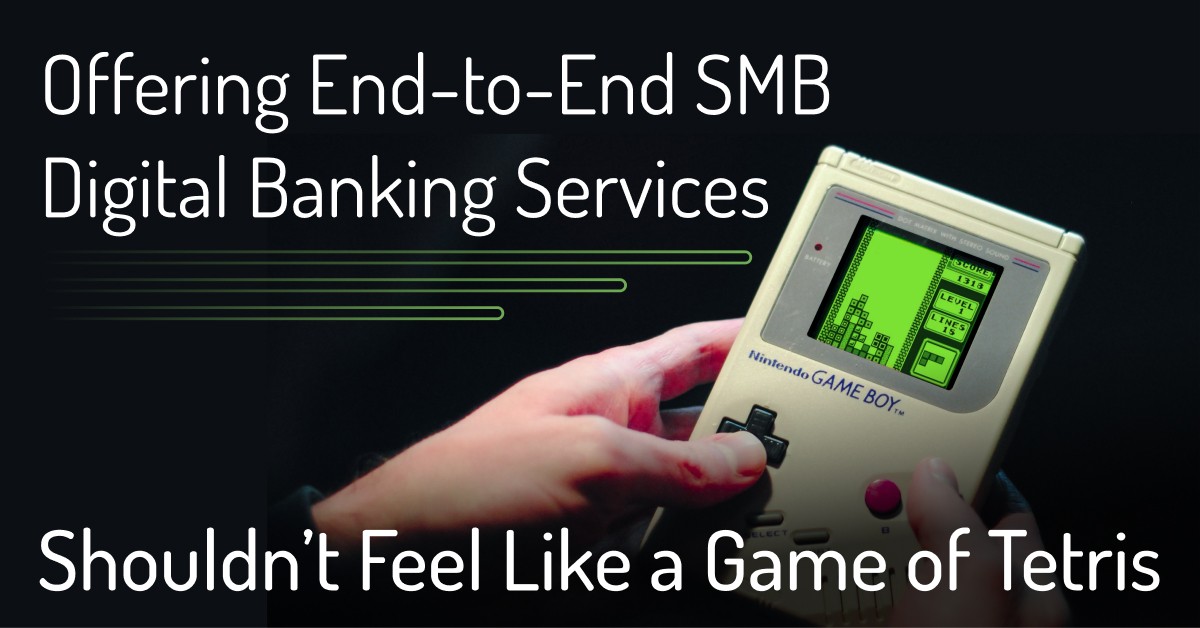
Offering End-to-End SMB Digital Banking Services Shouldn’t Feel Like a Game of Tetris
Building a world-class fintech or bank today, especially one serving small businesses, can be like playing a game of Tetris. You have to visualize how to manipulate each digital puzzle piece to fit correctly into your platform in a way that ensures future, currently unknown pieces will also work. If you get one component wrong, future technologies — parts of the puzzle — can’t be positioned correctly, and you’ll have to start over from scratch.
But it doesn’t have to be that hard. Managing your tech stack should never feel like a game you can lose over one wrong decision.
As banks, both traditional and digital, delve into options for offering their small business customers the tools they need, like simple invoicing, cash flow and expense tracking, categorizing of business expenses, and the ability to create key financial reports, they need to understand the fintech landscape.
More than that, savvy technology decisions must start with a clear understanding of how fintech is evolving. Not only for those building their offerings, but also for the financial institutions offering APIs. Banks and app creators developed proprietary partnerships in the early days of financial technologies, and banks had a lot of power and control.
The first thing to note is that most traditional banks are quickly modernizing by addressing the front end rather than trying to transform a backend built on decades-old technology. They are embedding apps in their customer-facing platforms to offer today’s expected services without heavy investments.
Today, future-looking technologies are nimble and built with an eye to the future of banking and other financial services. They’re agile, can work with almost any platform, and can be manipulated to fit and evolve as needed.
Small and mid-size business owners don’t want multiple platforms or apps to perform their financial tasks. The ultimate service is everything in one place and the flexibility to choose what they need.
Financial services companies not willing to evolve and serve their small business customers with the services they require – at a reasonable price – will find customers have plenty of options.
As decision-makers consider their next steps toward offering business customers more flexibility and digital-friendly options on their banking and fintech platforms, they should approach the task with a clear understanding of a few terms:
Embedded finance: Emerging solutions allow for embedded financial services in third-party platforms. The result is multiple solutions in one place. For example, a business owner can access not only their bank account status but also their invoicing and expenses via their bank app or online platform.
API: Rather than building their own set of proprietary digital solutions, which can take years, a bank can seamlessly connect to existing solutions that can offer customers services like expense tracking or invoicing. Some fintechs will allow a bank to brand the application so their customers get a consistent feel and experience across banking services.
SDK: This tool set allows banks and platforms to more quickly integrate with and launch value-added services by utilizing prepackaged screens that can be easily branded or white-labeled. It can be simple and convenient for the bank.
Data Lake(s): This is real-time storage of raw data that can come from multiple sources. Financial institutions and small business platforms can securely store, within their own private cloud, all their customer and business information in one large pool to access later, and run their own proprietary analytics.
It generally takes multiple technologies — or puzzle pieces — to build a financial solution that serves businesses well. Today’s forward-looking banks and fintechs want to develop ecosystems for business owners that keep them on their platforms. They want to offer simple bookkeeping, cash flow tracking, and other services small businesses need. Hurdlr’s API has helped many banks and fintechs achieve robust digital services for their small business customers. It’s an ideal solution for a small business platform without having to spend years in development.